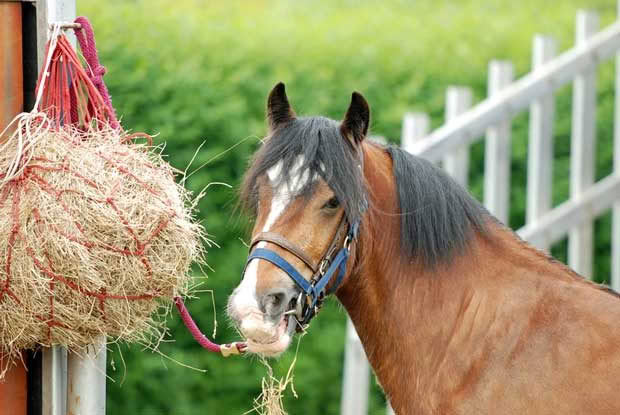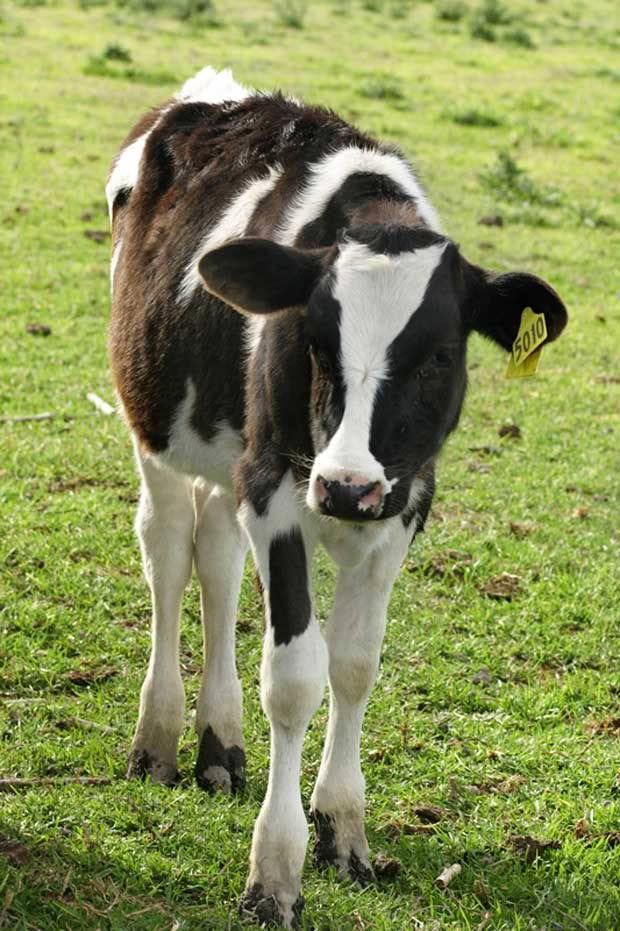7 ways to save on winter feed costs

Using a hay net will reduce wastage.
Winter feed can really blow your farm budget. Here are some ways to cut down on your costs during the colder months.
Words: Nadene Hall
USE A DEDICATED FEEDER/HAYNET
When feeding out hay, you’ll typically lose 15-30% from trampling/contamination. Grain and pellets have a waste factor of about 5%. Using a feeder or trough of some kind, or a hay net for horses, cuts down on the amount of trampling of feed significantly. Having a lid on the feeder so hay/silage doesn’t get wet will also save you money, as animals prefer to eat dry hay and may even leave it if it gets wet.
FEED OUT IN THE AFTERNOON
This is for two reasons. Firstly, animals fed hay/silage in the morning won’t tend to go out into the paddock to eat any pasture that is available if hay/silage is on tap so early. By waiting until the afternoon, you encourage them to get out and about, and therefore don’t have to feed them quite as much. Secondly, hay/silage fed in the afternoon will help keep animals maintain their body temperature. Keeping warm uses a lot of energy and requires more feed, so it’s a better utilization of their feed.

Plan pregnancies better to avoid early calves.
TIME YOUR PREGNANCIES BETTER
For large-scale farmers of cattle and sheep, there are set productivity targets to meet when it comes to timing of births. On the small block, it’s much more economic for you to time births for when your property is at peak forage production. If you have animals being born with no feed on the ground for their mothers, you are going to have to buy in feed to maintain nutrition at a peak time – a very expensive way to raise animals.
CHOOSE FORAGES FOR YOUR CONDITIONS
NZ Lifestyle Block columnist Ruth Renner wrote of the significant savings she makes by over-sowing Italian ryegrass in her kikuyu pastures in autumn, to provide an excellent feed for her cattle over winter and early spring. It’s far less work (no feeding out) and cheaper (seed versus buying in finished, processed hay/silage/grain), to have pasture plants that will feed your livestock during colder times of year. Experiment to see which pasture species will provide more benefit for your livestock; this will vary considerably from warmer climates like Ruth enjoys in Northland, to the colder temperatures of the South Island.
IT’S EASIER TO MAINTAIN CONDITION…
… than to try and build it up over winter. If you have pregnant livestock over winter, it will be much cheaper to maintain a good condition built up through late summer and into autumn, than to try and get it on an animal in winter.

Photo: Dreamstime
ANTICIPATE THE CONDITIONS
If you know your bottom paddock gets boggy in winter, then graze it out at the beginning of winter (or the end of autumn) when it will be less wet, and therefore at less risk of pugging/compaction damage from your livestock. The more water-laden a soil, the more significant the damage livestock will do to its structure. This means less pasture growth in spring and significant production losses over the rest of the year.
PLANT SHELTERBELTS
If you haven’t already, plant shelterbelts so your animals get protection from wind and rain during winter. The amount of feed required to maintain body temperature is reduced if animals can get protection from exposure to cold temperatures. An animal that can get to shelter will tend to spend more time eating and less time huddling trying to get warm, so will maintain its weight with less feed.
Love this story? Subscribe now!
 This article first appeared in NZ Lifestyle Block Magazine.
This article first appeared in NZ Lifestyle Block Magazine.
